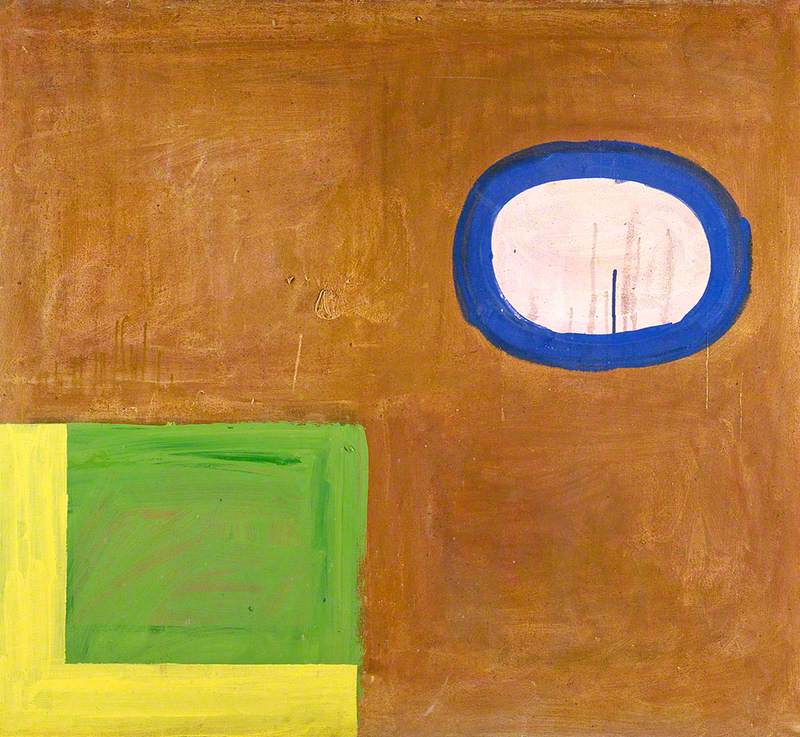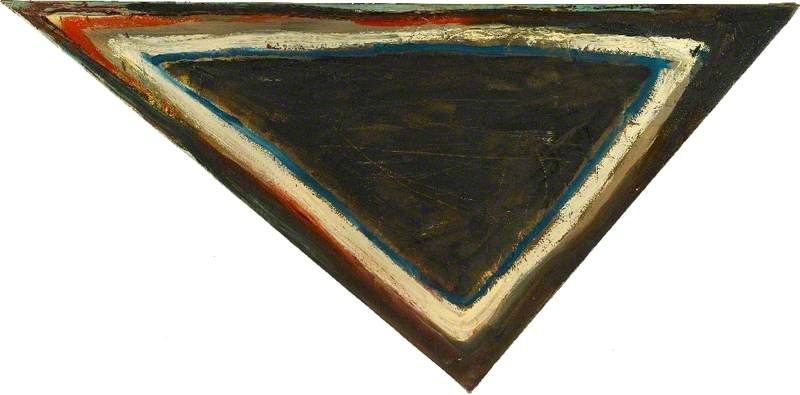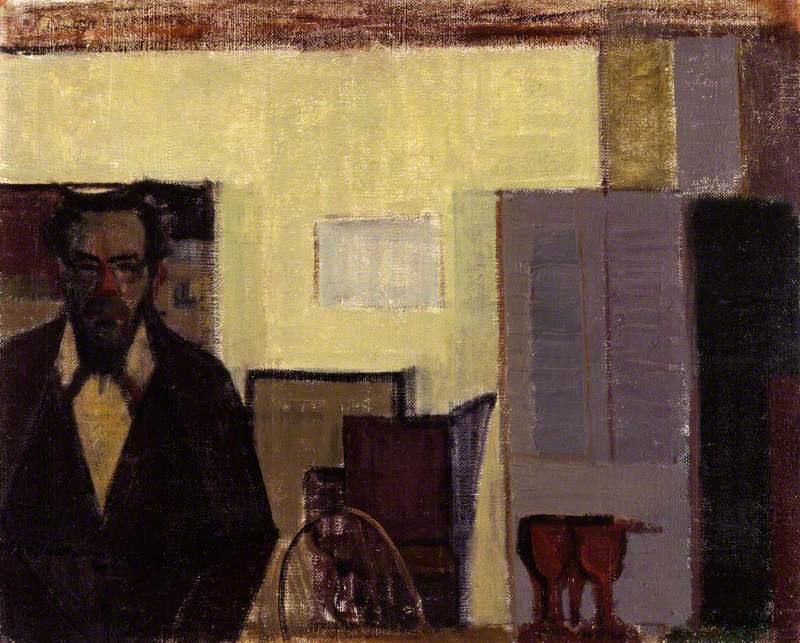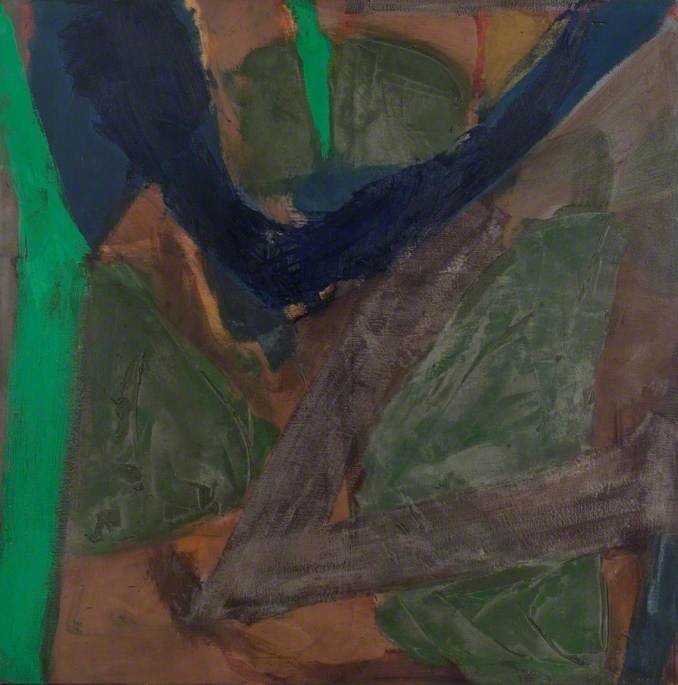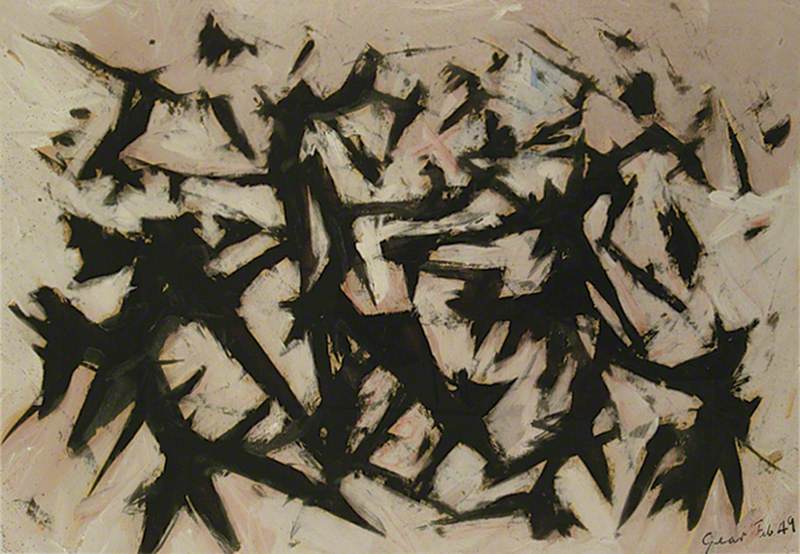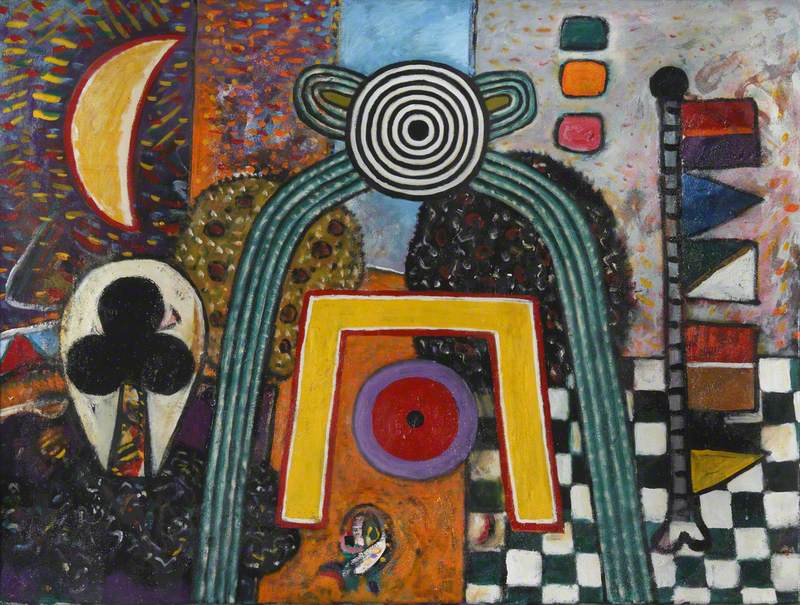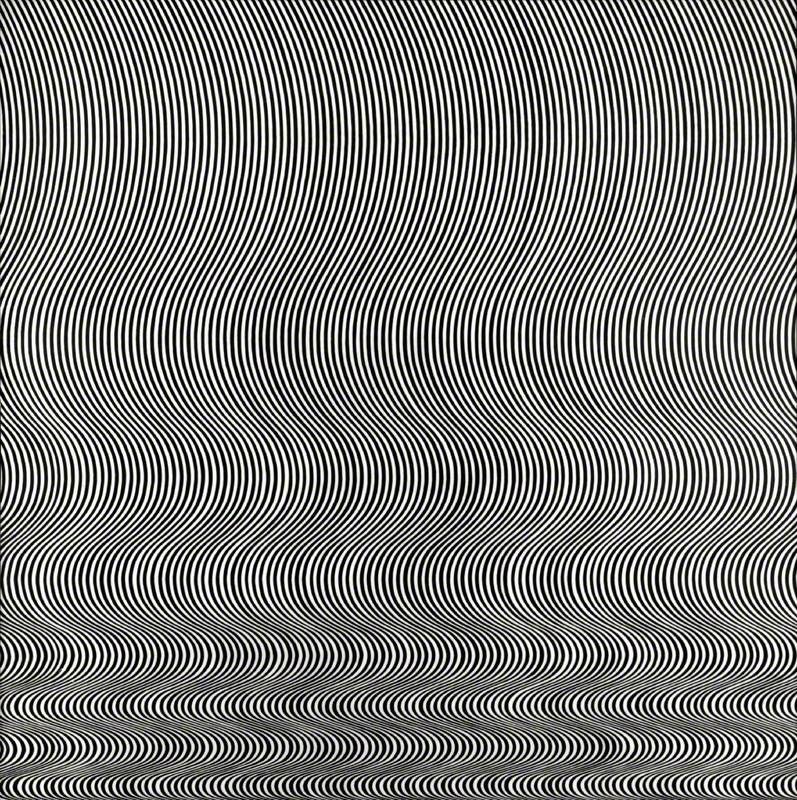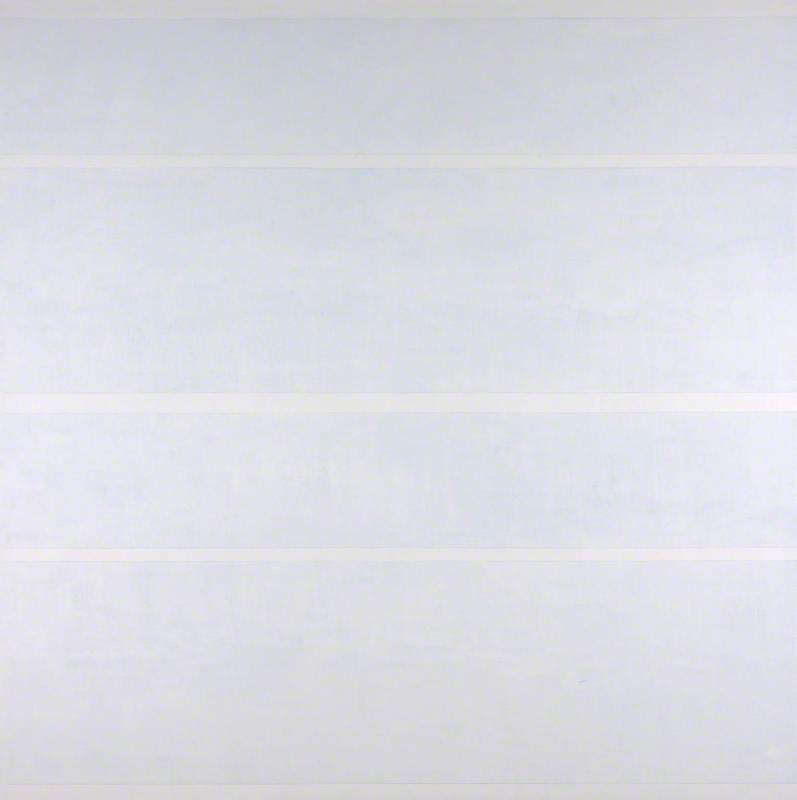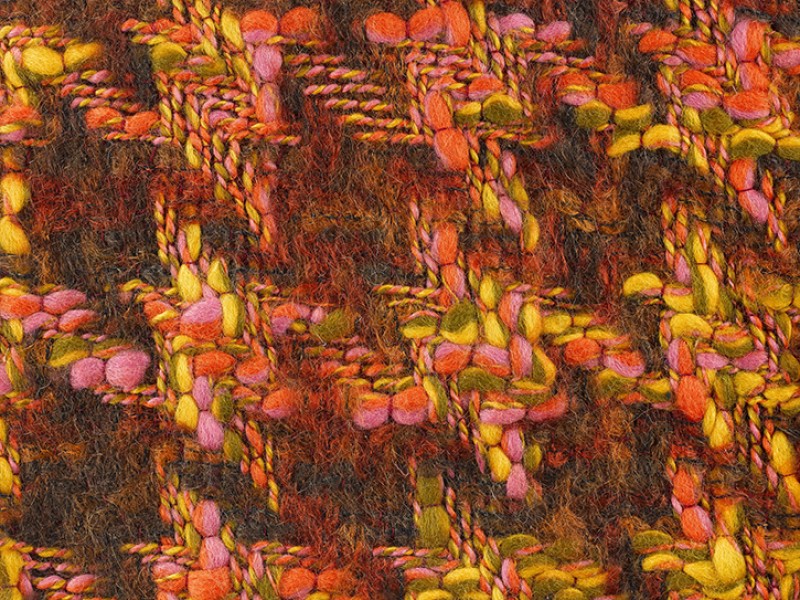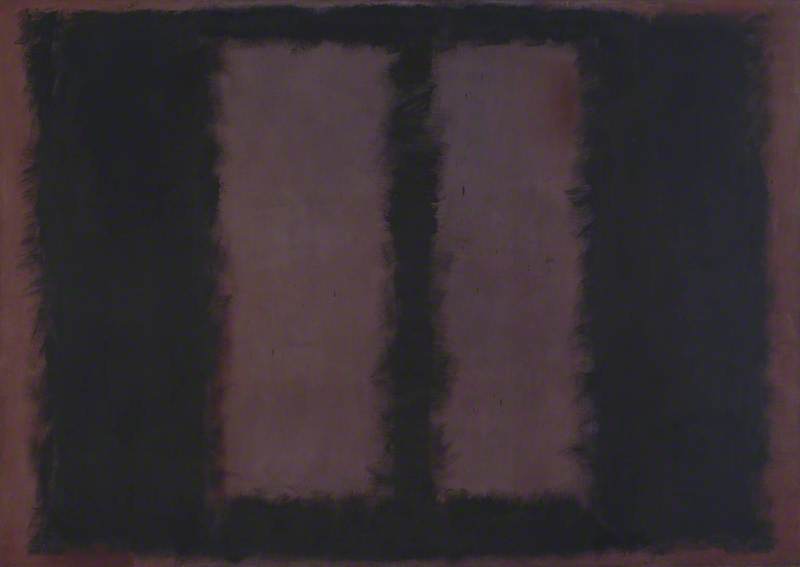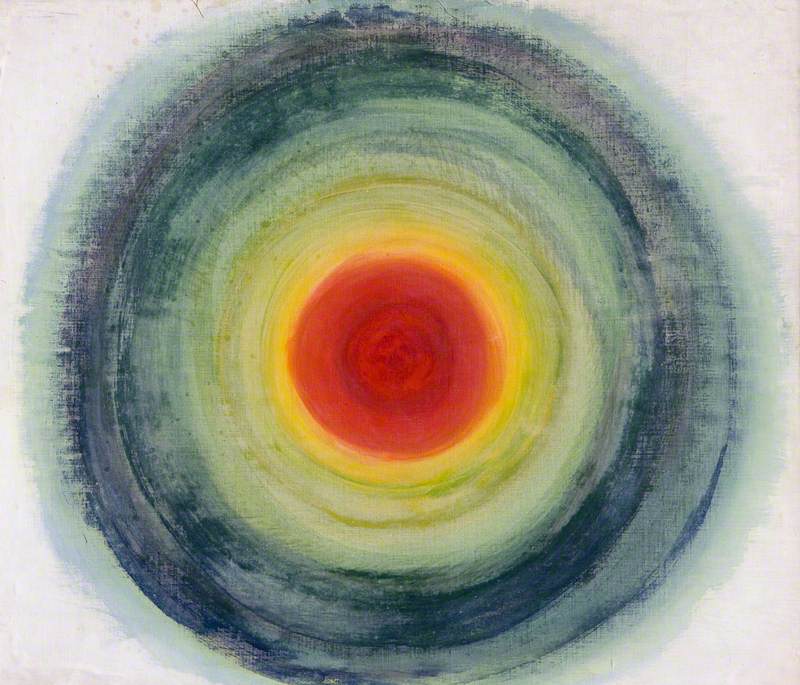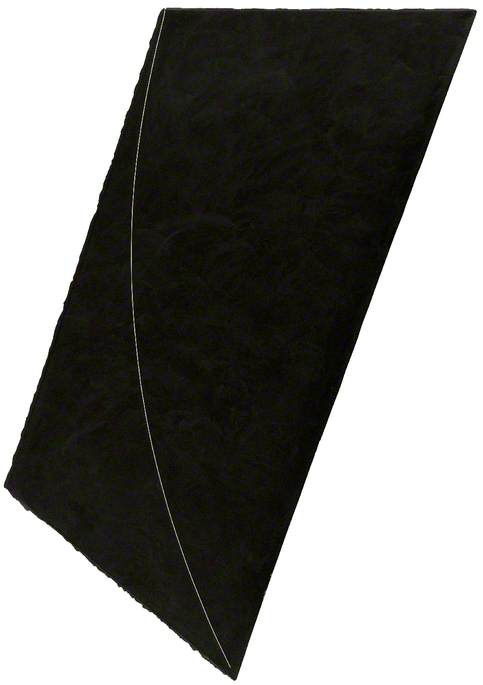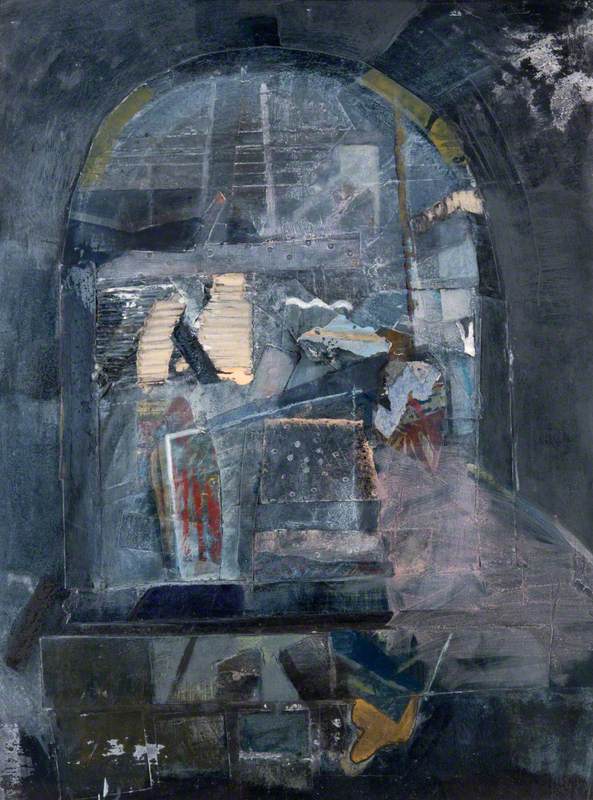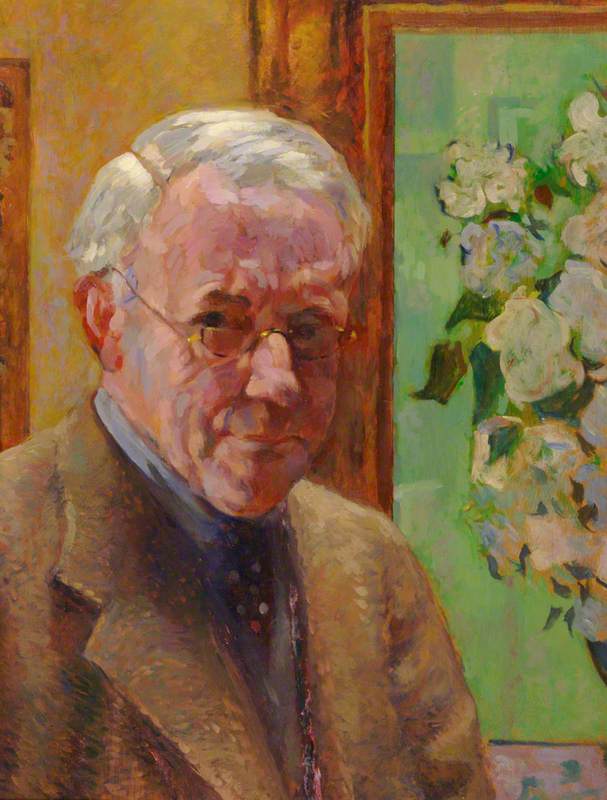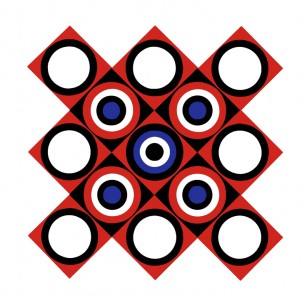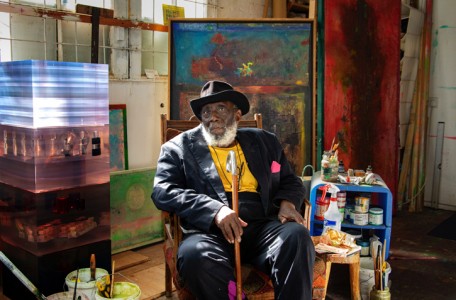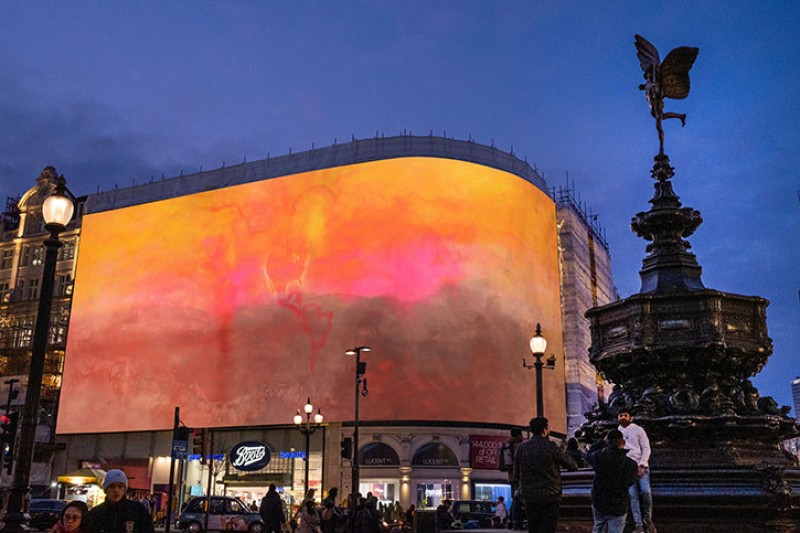When an artist’s funeral is attended by hundreds of his peers, former students and friends it says much of his life. Such was the case with Geoffrey Rigden, for whom they gathered at the Nicholas Hawksmoor church, St George-in-the-East, shortly after he died, aged 72, in February 2016, not far from where he lived in Wapping.
Rigden was an abstract painter and sculptor strongly influenced by a love of jazz and an eclectic mix of French and American artists. His own work, in several public collections, including the Arts Council, is in mixed company immediately identifiable. Commonly produced with a rich palette, Rigden’s images have a magnetic, iconic quality that holds the viewer. He realised that the primary reality a picture surface offers is its physical flatness. Asked what was the hardest problem he faced when painting, he replied: 'Getting it flat… getting it flat, and everything else.'
On first meeting he hardly appeared an intellectual, in conversation convivial with a ready glass to hand. However, it soon became apparent that his knowledge of technique and the influences that had shaped modern art was profound. He wrote as well as he talked. He was also widely read, from Anthony Powell to the Greek poet Cavafy. His friend artist Mali Morris on a last visit to him noted 'amongst the many art books, a biography of Francis Poulenc, a classic Raymond Chandler novel, short stories by P. G. Wodehouse, and the definitive study… Those Great Cowboy Sidekicks. This made a nice link with one of the tracks played at his funeral, Spaced Cowboy by Sly and the Family Stone.'
Born in Cheltenham in 1943, Rigden was brought up in the household of his maternal grandparents after his father was killed on Royal Air Force active service. Left as a single parent, his mother had to be out on her bicycle making a living as a hairdresser. His grandfather was a commercial artist and amateur painter 'who encouraged me to draw and make things – his favourite axiom was "learn how to use your hands."' After private schools, including Gloucester Cathedral School, and grammar school in Somerset, where his talent was encouraged, he entered Somerset College of Art in 1960, showing a predilection for seascapes influenced by Monet and Christopher Wood.
On a scholarship at the Royal College of Art in 1963, his approach to painting 'was soon adapted to comply with my perception of how an "urban" artist should proceed.' Although there were no formal classes, students had to produce a stated number of figure studies at the end of the first year. Failing to comply, Rigden reasoned to Professor Carel Weight that 'since I now regarded myself as an abstract painter, the life room was beside the point.'
For Rigden, it was the discovery of the American abstractionist Stuart Davis that 'fixed my direction. I think that his links with earlier European "urban type" painting – like Léger, whom I admired – and the word images with their jazz associations which fascinated me – made up a picture that I could identify with.' A large exhibition of Morris Louis, the paintings of Helen Frankenthaler and Kenneth Noland and the 1965 New Generation sculpture show at the Whitechapel Gallery confirmed the abstractionist course Rigden’s art would pursue.
To live, Rigden did occasional jobs repainting sculpture by such artists as Anthony Caro and David Annesley to supplement a main income from painting and decorating. He also worked several years from 1968 as a part-time assistant at Kasmin Gallery, assisting hanging shows of artists including Caro and Noland 'from whom, in particular, I learnt a great deal.' For seven or eight years from 1970, Rigden taught two days a week at Canterbury College of Art, occasionally visiting other colleges. With his painter friend Mali Morris he taught at the fine art department of the University of Reading. Living in the country, there was a revival of interest in landscape, which 'inflected' his painting, although it continued non-representational. He also painted 'straight' landscapes, owing much to the American Matisse-influenced Milton Avery.
From 1977, Rigden’s Canterbury colleague Stass Paraskos invited him to attend Cyprus College of Art summer school, a relationship with the island that lasted many years. It prompted black and white paintings on paper incorporating landscape and architectural motifs. Returned to London, he would 'work out of these' to yield paintings characterised by 'a predominantly "all over" look and thickened surfaces. They averred much to the German-American abstract expressionist Hans Hofmann, an important lodestar for Rigden. From the mid-l980s, Rigden’s work played down painterliness, becoming 'more about planarity allied with a kind of geometric drawing.' His choice of media was catholic and work practice slow. Latterly, he made painted constructions of wood and mixed media, as wall reliefs and free-standing sculptures.
An exhibitor in many mixed exhibitions, he won a prize in 1965 in the junior section of the John Moores, Liverpool, and in 1977 at the Tolly Cobbold/Eastern Arts Open. Solo shows included Spacex Gallery, Exeter, 1981; Francis Graham-Dixon, 1993; Cross Street Gallery, 2000; and Poussin Gallery, 2012. The last, a survey of Rigden’s paintings and construction from 1975–2012, was organised by his painter friend Cuillin Bantock. In a perceptive essay, he remarked that the artist 'while never failing in insight over the work of others, a trait which made him beloved of students, is curiously diffident, almost inarticulate, about his own.' Rigden’s output made 'no concessions to observer-comfort. It takes the risk of coming with a skin missing. There is no attempt whatever to impress, to ingratiate, to seduce with good behaviour, with bravura, chromatic thrills, or even come-hitherness. On the contrary, each work is so singular, so much its own self, it is almost as if it doesn’t like being looked at. The free-standing constructions in particular, feel like people on their own, and uncomfortable with it, at a social gathering.'
David Buckman, art historian
David is author of From Bow to Biennale: Artists of the East London Group, Francis Boutle Publishers, 2015.
Rigden’s painter partner Jennifer Harding organised a memorial exhibition at APT Gallery, Deptford, from 30th June to 10th July 2016.
